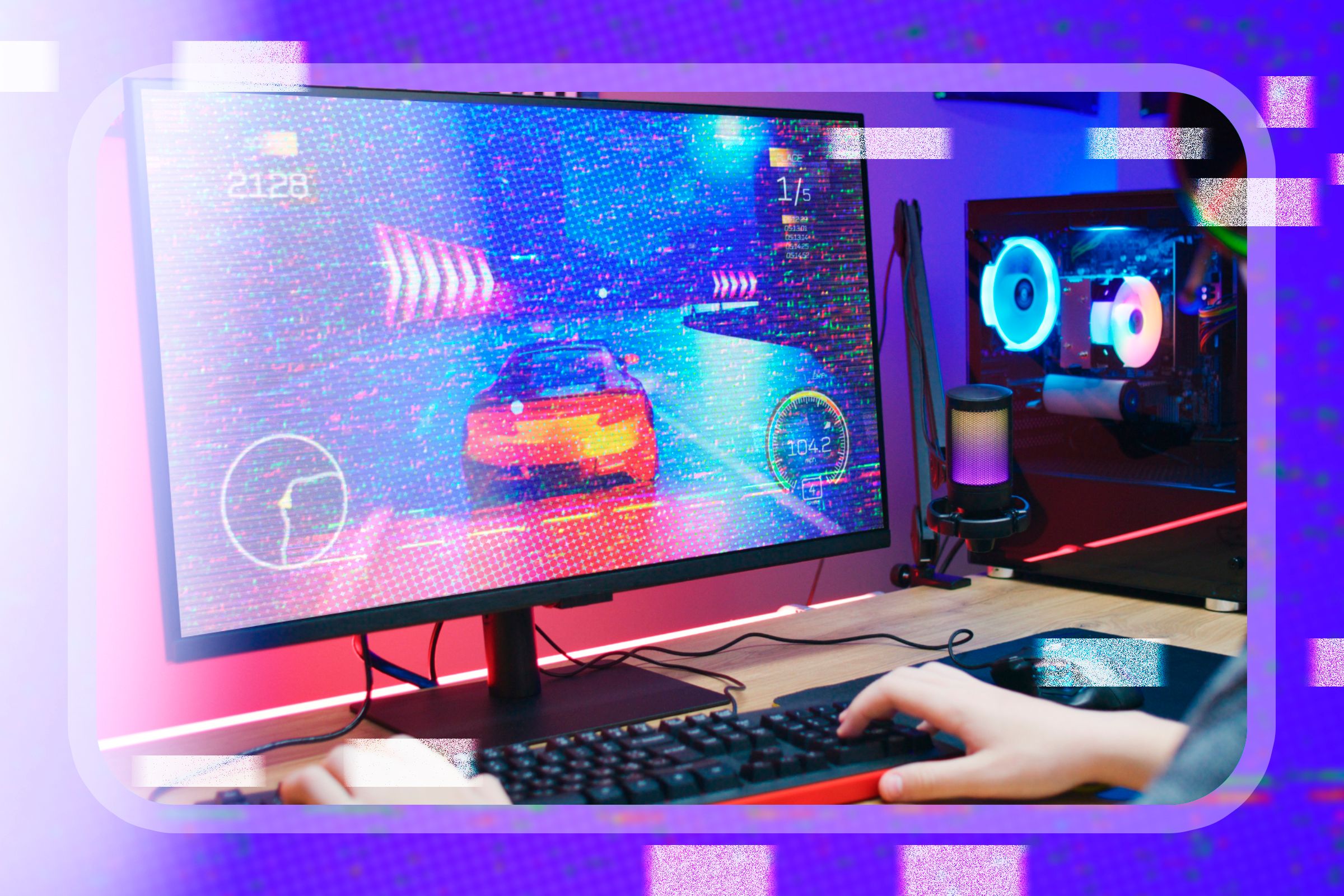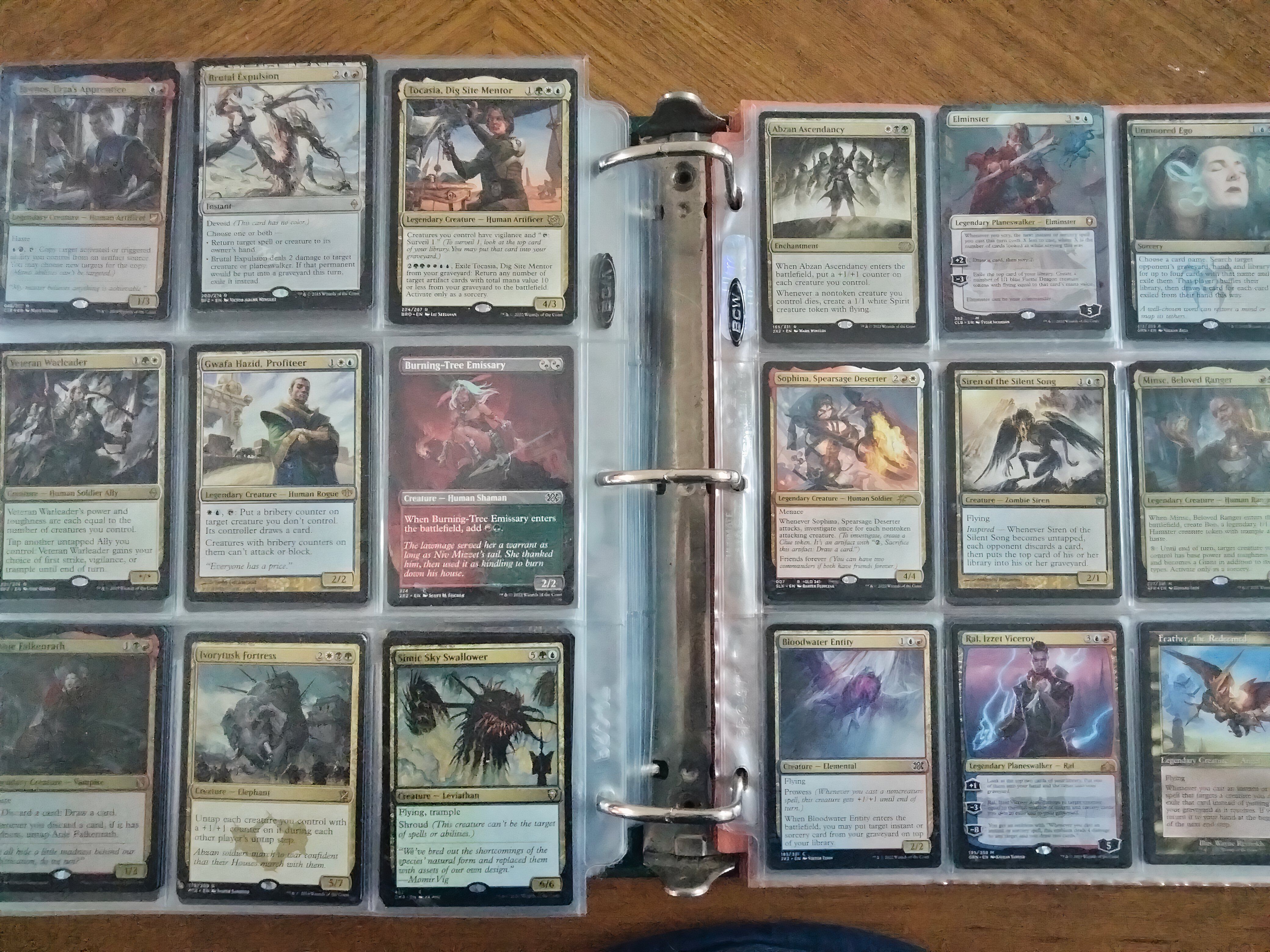Key Takeaways
- Physical trading card games (TCGs) offer tangible joy and promote social interaction.
- Digital TCGs lack social interaction and limit the ownership and trading of cards.
- Despite monetization benefits, digital TCGs fail to match the value and engagement of physical cards.
I’ve been a collector of Magic: The Gathering cards for over a decade and have a Pokémon TCG card binder. I’ve recently started collecting for One Piece TCG. Despite so many card games moving to the digital realm, I much prefer luxury cardboard rectangles. Here’s why.
There’s a Tangible Joy in Physical Collections
Every time I give someone my Magic: The Gathering binder to go through, they marvel at how much I’ve collected about the game’s history. Each page contains cards that tell a story, either lore-wise or through interactions with people. Physically, being able to touch cards adds a tangible sense of realism to a game about magic, sorcery, and multiverses.
As an avid trading card game (TCG) player, I’ve tried to get into digital versions of these games. I play MTG Arena, although nowhere near as much as I’ve played paper Magic: The Gathering. I have played Pokémon TCG Live and even got started with Pokémon TCG Pocket on Android recently, noting how fun it is as a digital game. But I just can’t connect with them outside of a base level of interaction.
The big thing for me is seeing how others respond to my physical collection. Whether it’s Magic: The Gathering, Pokémon, Yu-Gi-Oh, or anything else, seeing what others have and showing off your own collection is part of the fun. So on a related note, one of the biggest issues I have with digital TCGs is that they go against one of the core elements of a TCG: social interaction.
Digital Games Create a Social Interaction Gap
If you ask me what my favorite moments are from playing paper Magic: The Gathering or even One Piece TCG, I can list at least a dozen. If you ask me about my MTG: Arena interactions and which ones I remember the most, I honestly can’t tell you. The only difference is that I can see my opponent’s reaction to what I’m doing over a table, but I can’t do the same in these digital TCGs.
TCGs were originally created to give players something to do in a short space of time. Magic: The Gathering, the grandaddy of TCGs, was built to be a game people waiting to get back into a Dungeons & Dragons campaign could play as they waited. The game took on a life of its own where building, testing, and playing decks led to an entire social phenomenon around the game.
Today, opening someone else’s trade binder and seeing what they offer is a big part of the social interaction surrounding the game. Seeing what cool stuff your opponent comes up with and can do with their available cards is one of my favorite aspects of the hobby. Yet online, your interaction is limited at best.
TCGs are inherently multiplayer experiences. Sometimes, multiplayer games ruin the single-player experience. To limit toxicity in the community, many digital TCGs limit what opponents can say (understandably so given the toxicity present in online gaming).
The result is a handful of emotes that don’t even come close to what you might want to know about your opponent or their deck. It forces anonymity and isolation onto a game that fosters social interaction and friendship when played over a table.
There Are Limits to Digital Card Games
I love video games and TCGs, but one of the biggest issues I have with digital TCGs is that none of my real-world cards are transferred into the digital game. Some TCGs have innovative ways around this problem.
Pokémon TCG, for example, allows you to scan a 2D bar code for each pack you open that transfers those cards to your digital collection. For most others, however, there’s no way around rebuilding your collection from scratch.
Another sticking point for digital TCGs is that you don’t really own those cards. If you read the End-User License Agreement (who even reads those things, anyway?), you’ll realize you’re licensed to play with those cards, and the company can revoke that license anytime they see fit. With your physical cards, no company can pry them from your ownership without a costly legal battle.
Even more concerning is that you are not allowed to trade your collections in modern digital TCGs, meaning they aren’t necessarily trading card games anymore! Some games like Pokémon TCG and Hearthstone offer you the chance to get rid of excess cards and turn them into “dust,” which you can use to craft new cards. MTG Arena offers “wildcards,” which can be changed into any card of a set rarity, but there is no trading in multiple copies of a card to get new ones.
Some players in the game for a while have collections worth several thousand dollars. The price of some specific cards is ridiculous, but that applies to paper cards only. Since there’s no trading on these digital platforms, those digital cards are worth nothing.
Great for Monetization, Not So Great for Players
Part of the reason I dislike digital TCGs so much comes down to the way those games treat players. Giving players a digital platform to play against others is excellent, but there’s limited social interaction, and the cards they buy digitally aren’t theirs to do with as they please. There isn’t any trading, and those digital cards retain no value aside from the digital realm they’re minted in.
There are some exceptions to this. Magic: The Gathering Online, the previous iteration of the digital format for Magic: The Gathering, has some value for collections and trading implemented, but they’re still digital artifacts owned by the parent company. Like many digital games, players pay for licenses to use cards in-game and nothing more. It makes you wonder if it’s worth shelling out for a pack, right?
Can Digital TCGs Be Fixed?
Digital game assets have always been controversial. However, there have been attempts (like with Pokémon TCG) to bridge the gap between physical and digital. Including ways to scan the contents of a physical pack of cards into the digital game is a step in the right direction.
However, the most significant gap to bridge would be human interaction, and I don’t think digital TCGs can do that. Maybe, in the future, we’ll have VR experiences that take us closer to physical card games. Until then, I’ll stick to showing up at my local game store for that.






